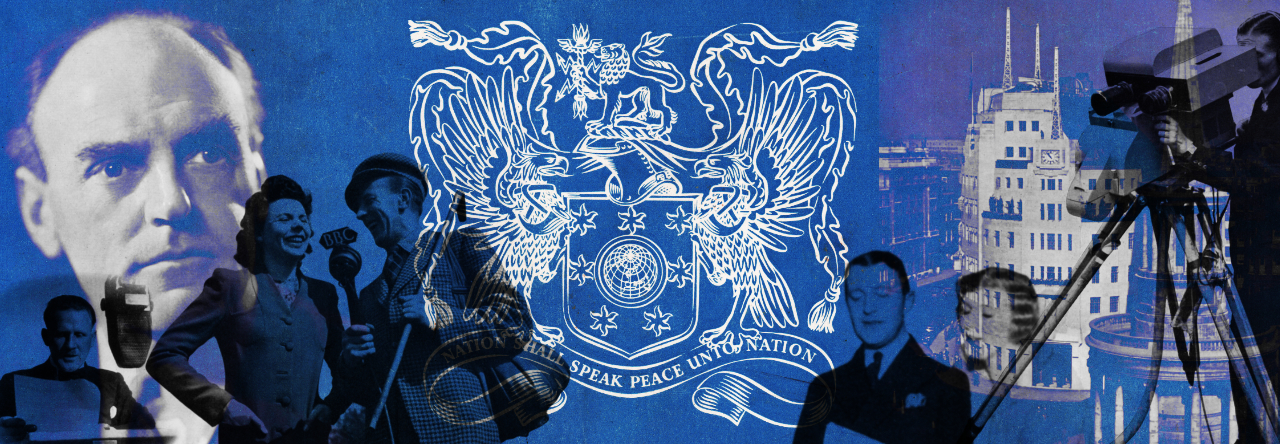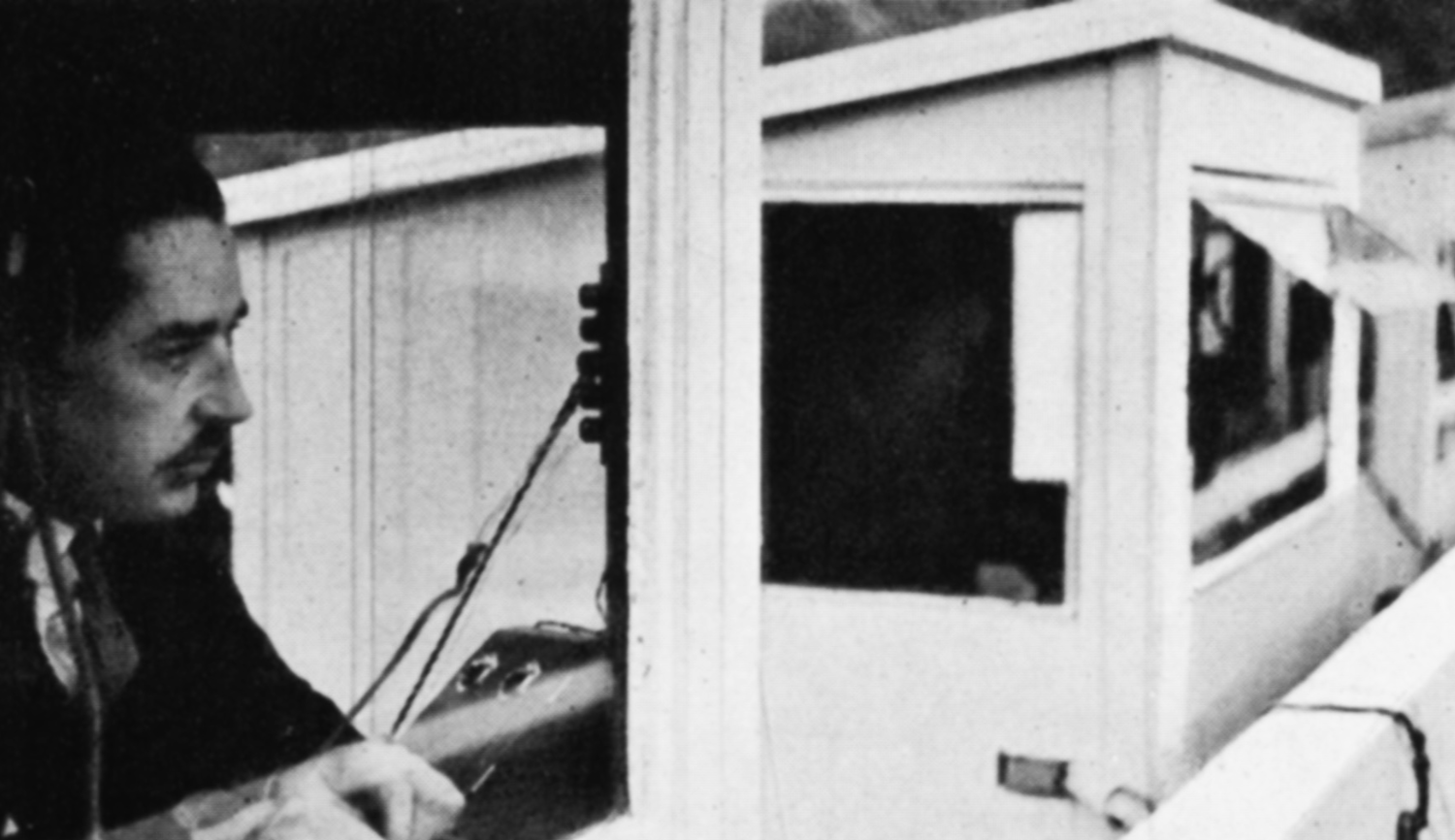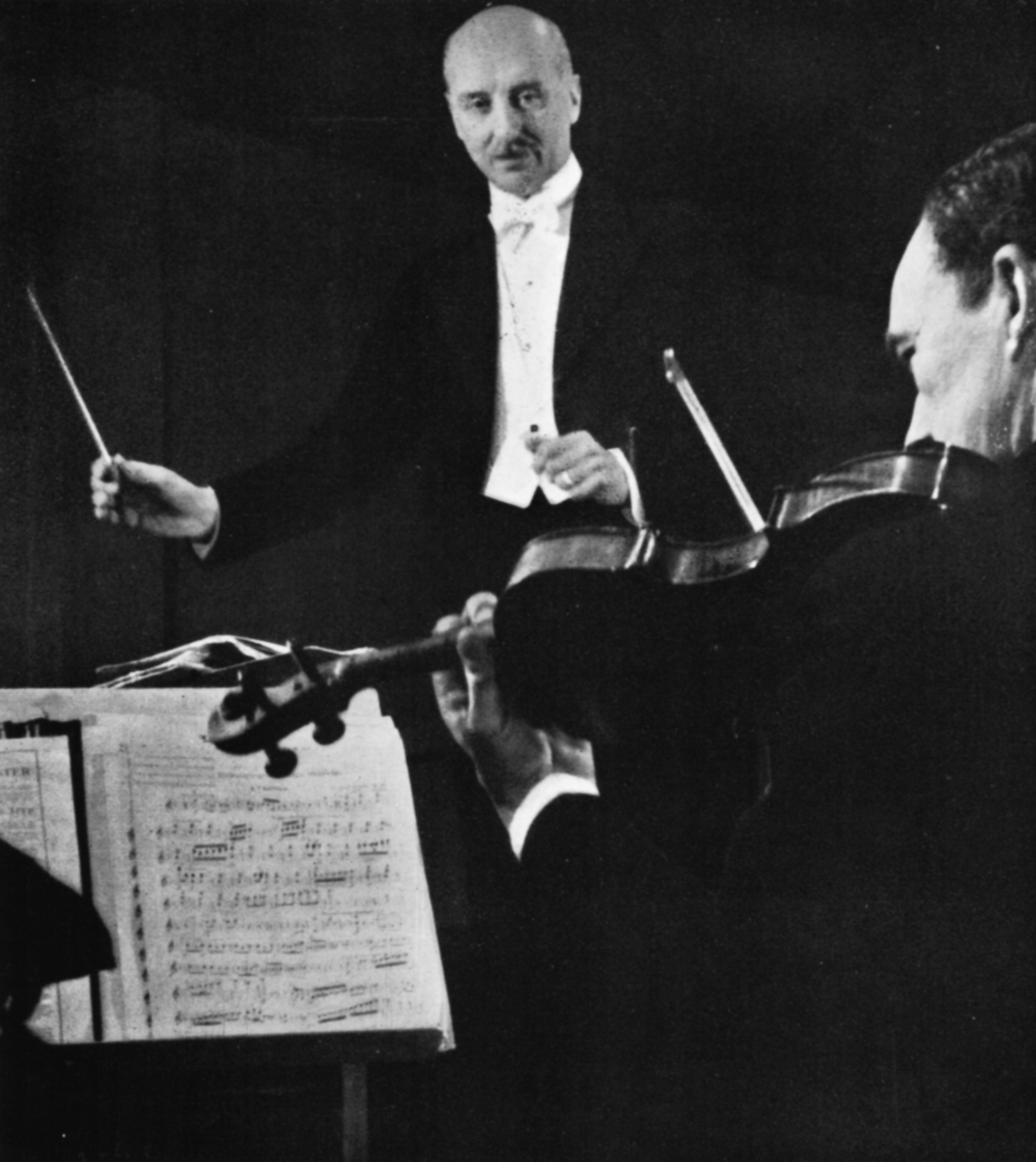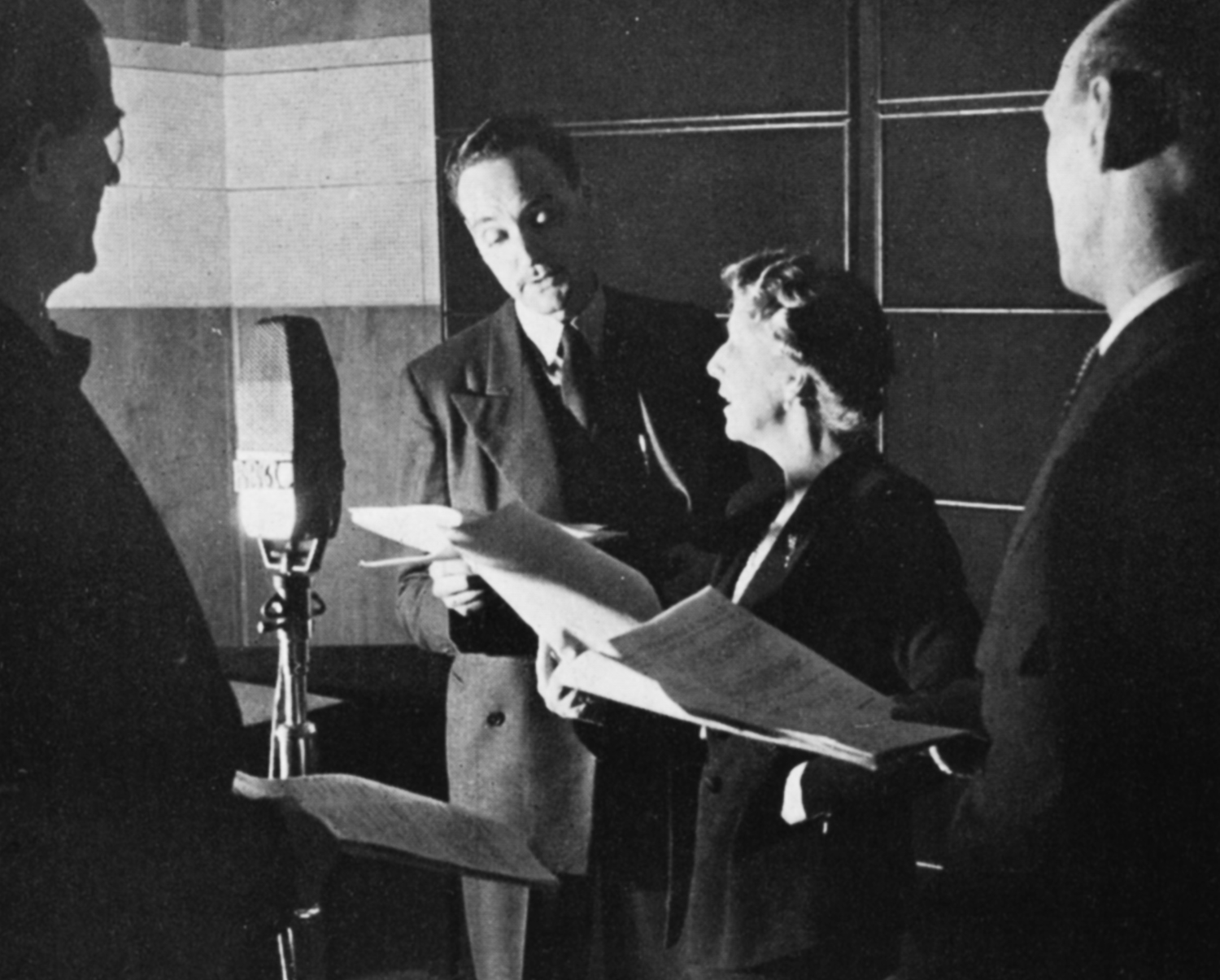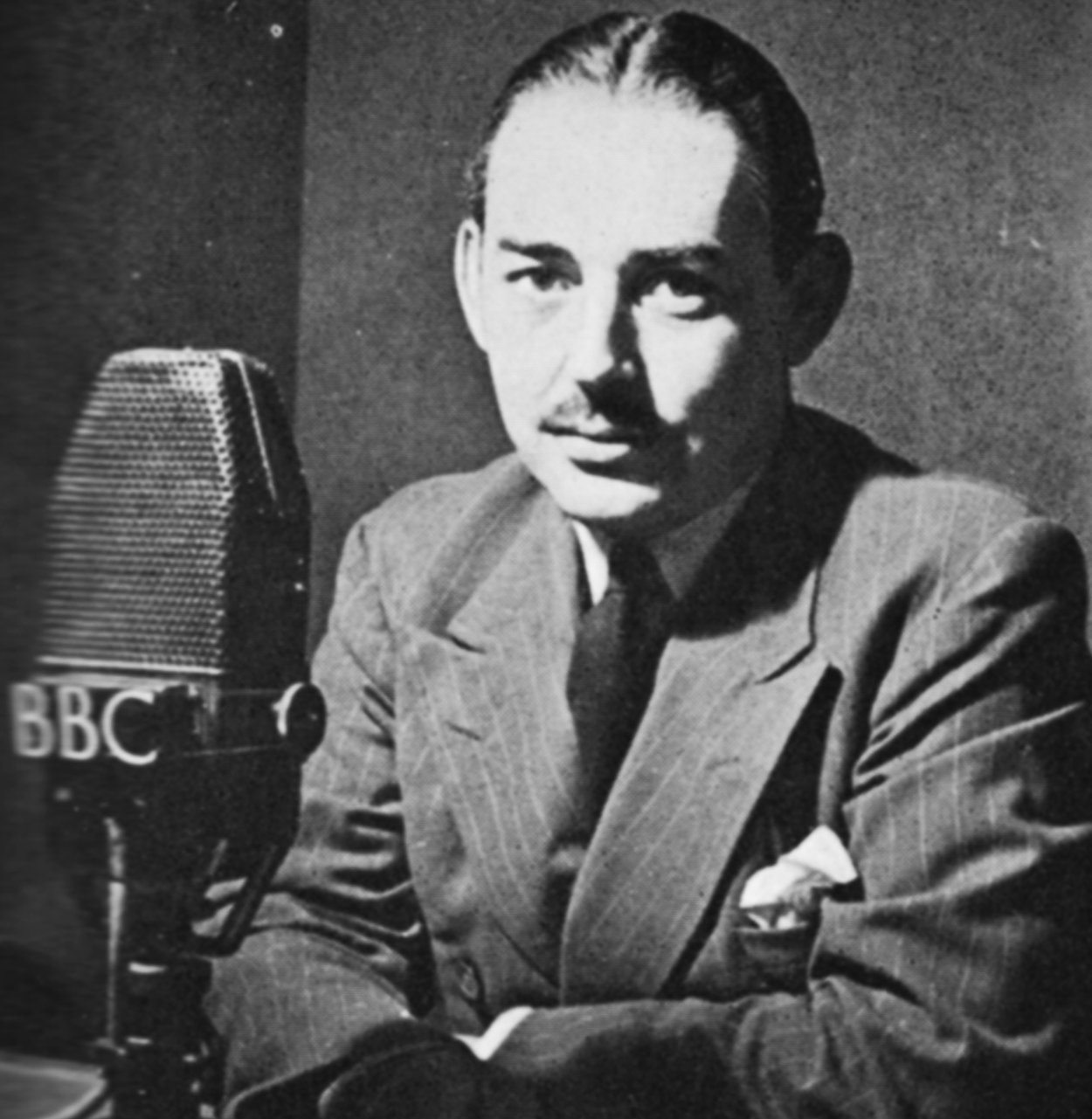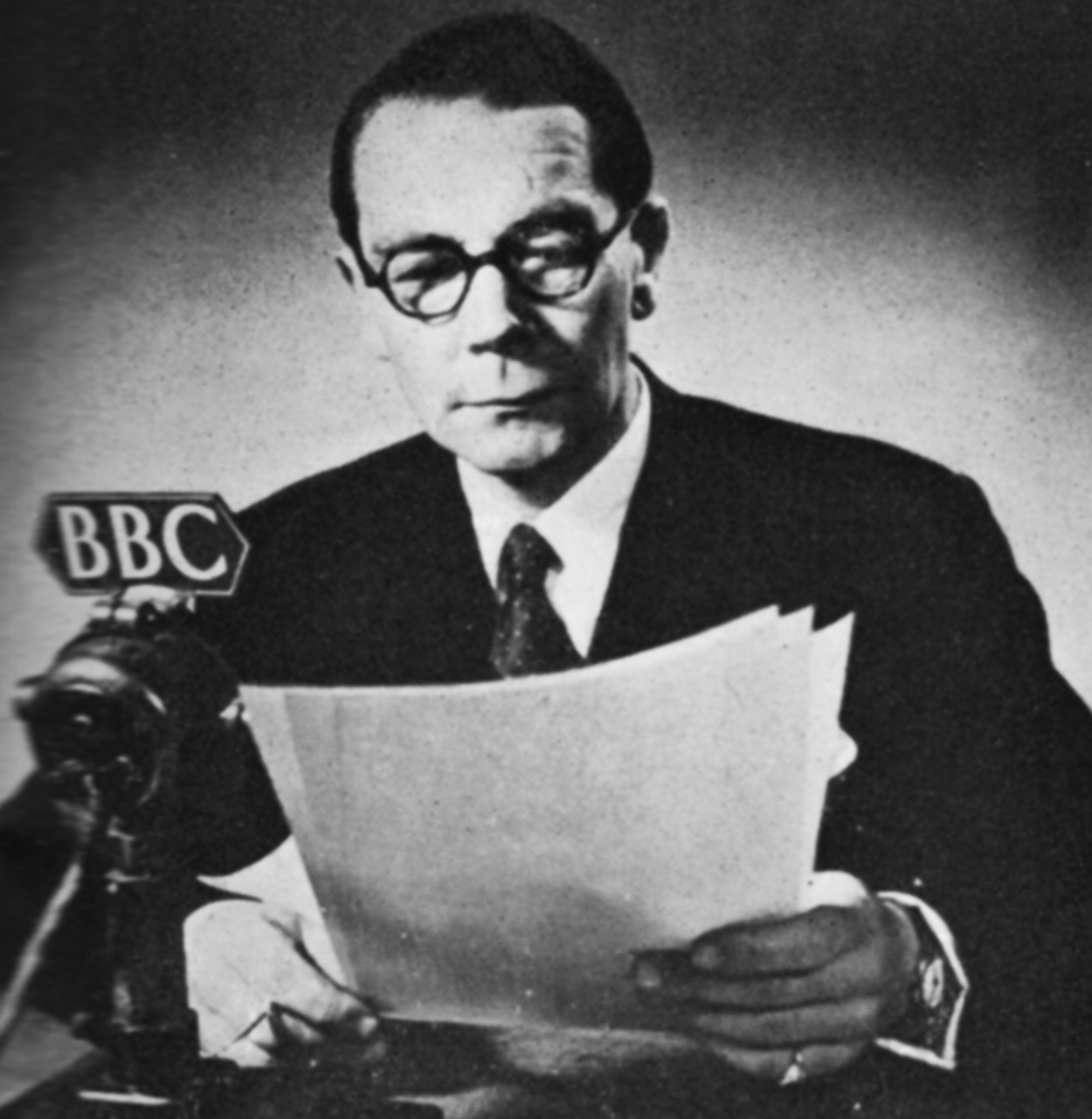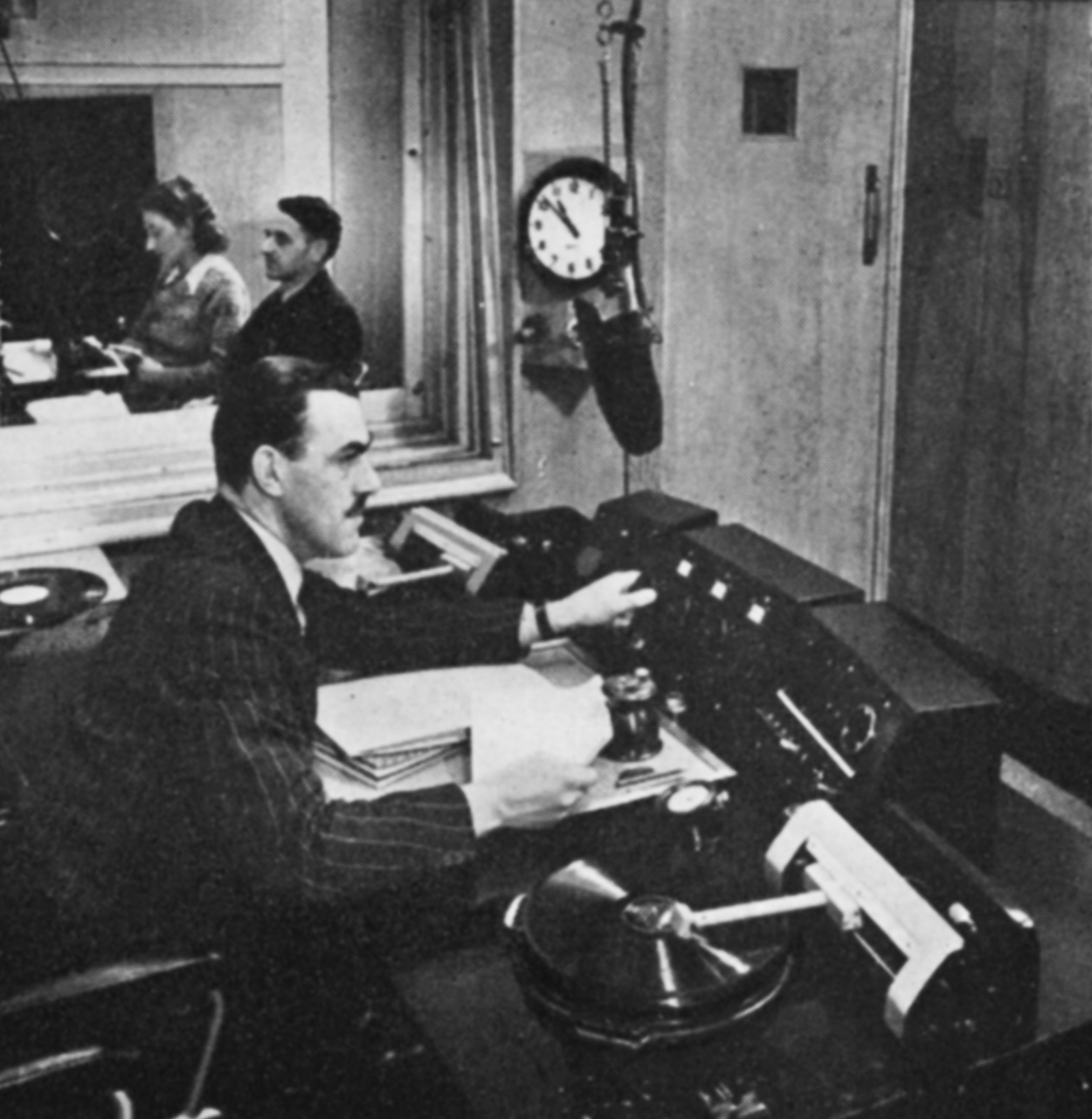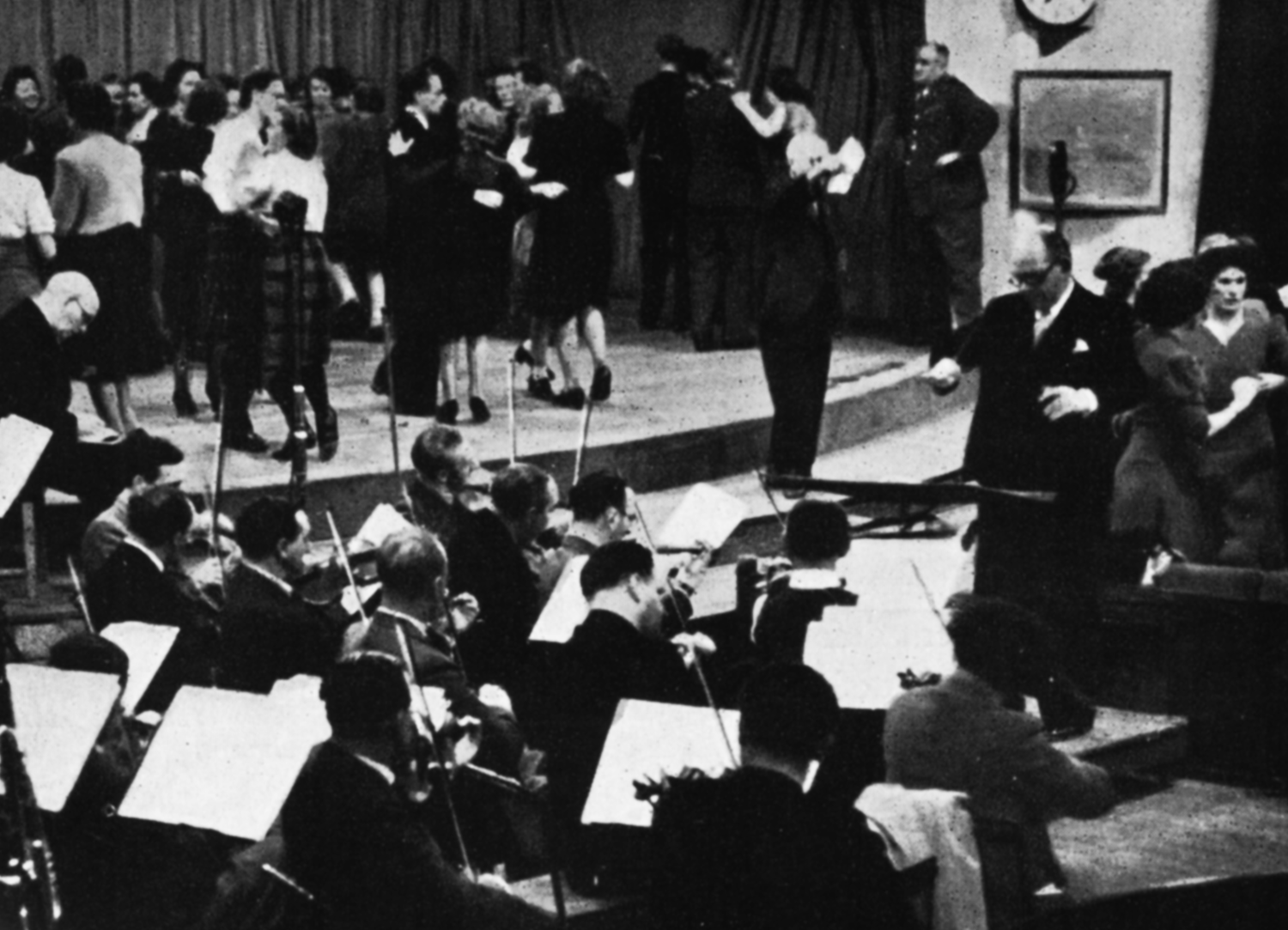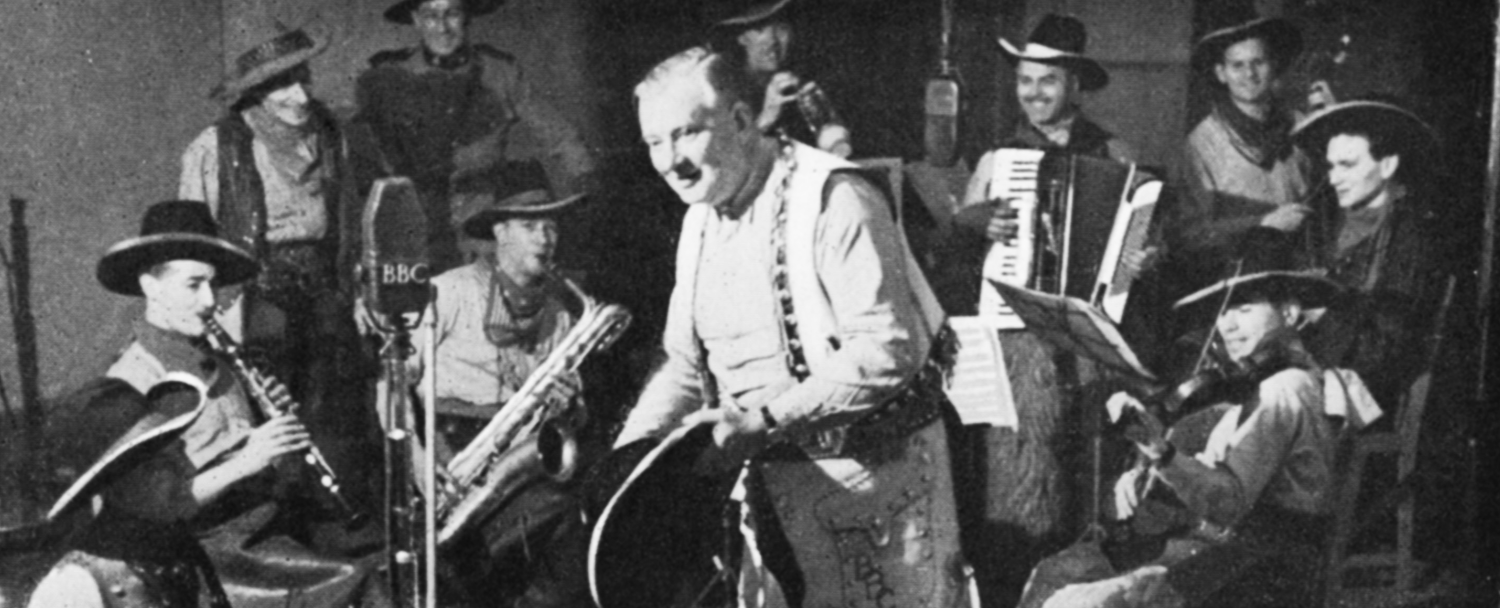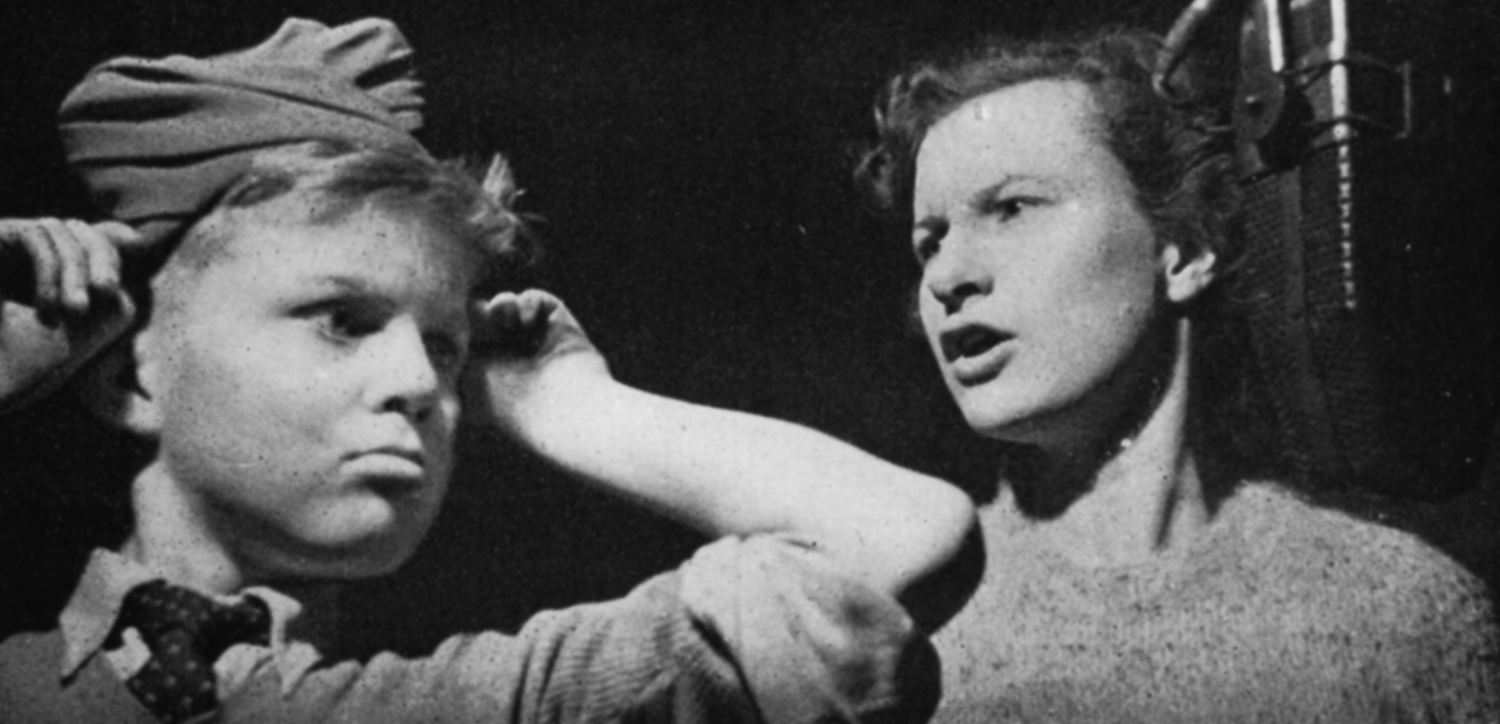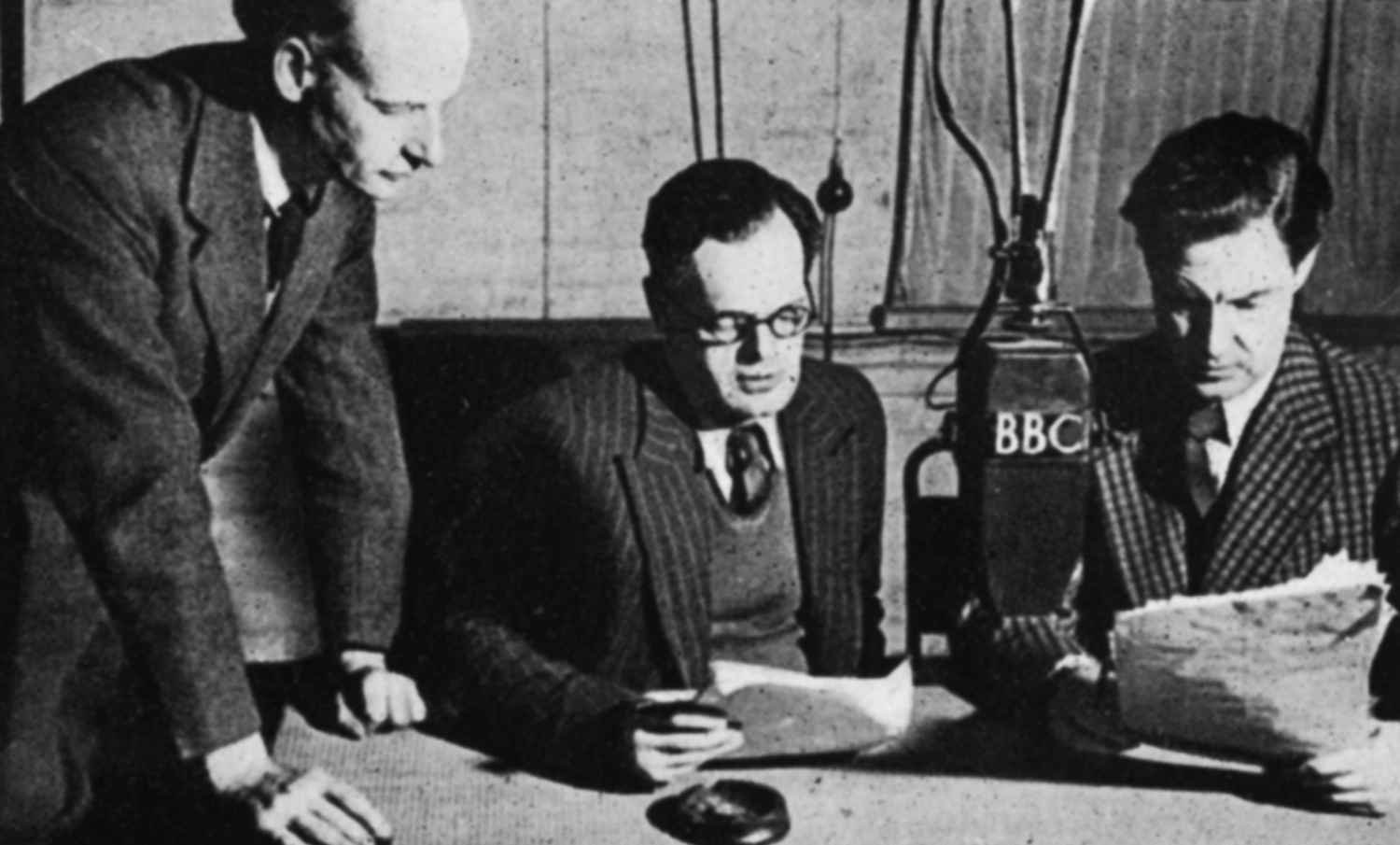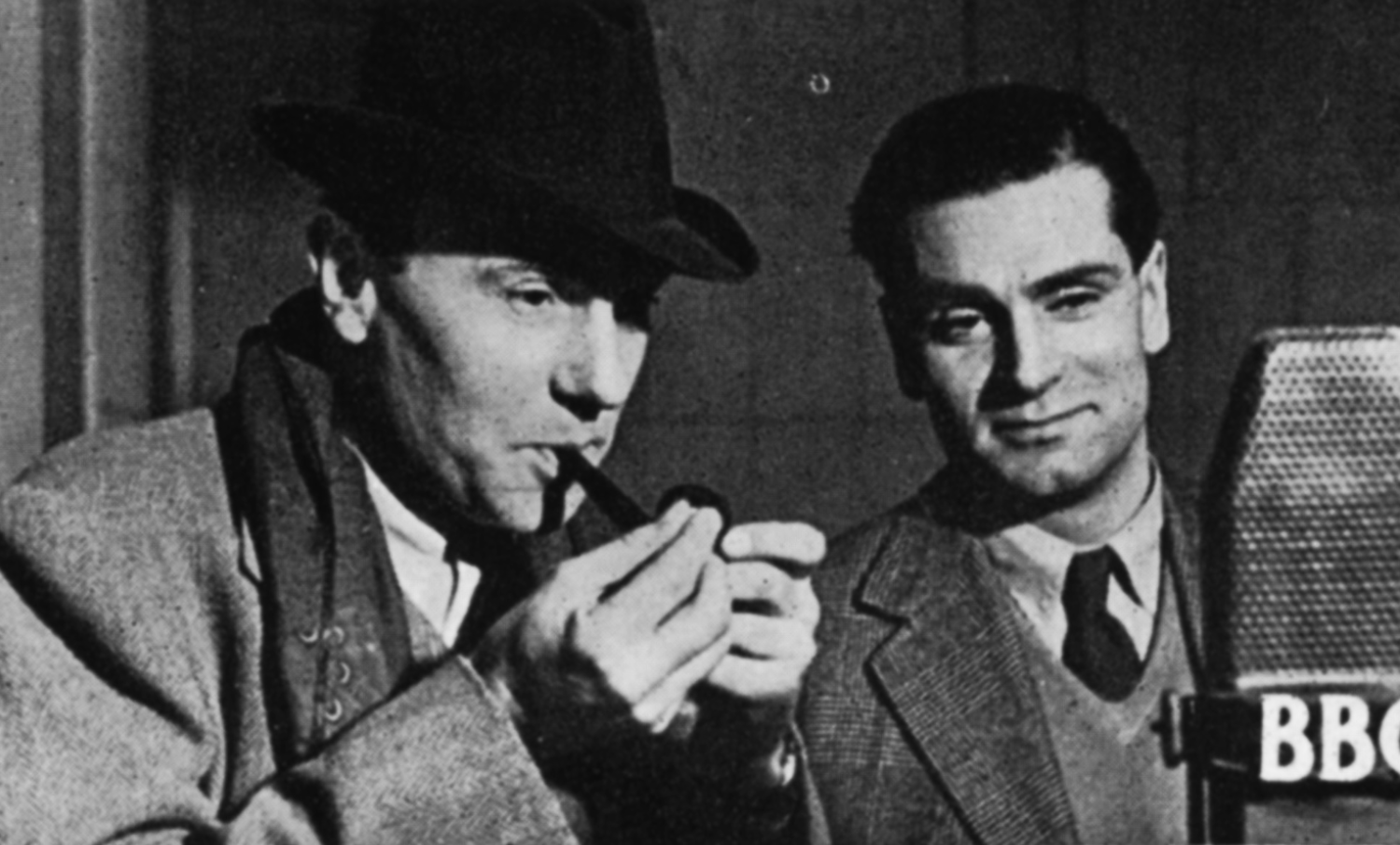
Sir Noel Ashbridge, BBC Chief Engineer (crouching by the camera), supervises arrangements for televising the Coronation
Sight joins sound on its journey
WHEN King George VI and Queen Elizabeth in their Coronation Coach reached Hyde Park Corner on 12 May, 1937, they were seen, not only by the throng lining the processional route, but by an army of people scattered over the Home Counties, from Cambridge in the north to Brighton in the south. This was television, bending the resources of a modem phenomenon to the illustration of an ancient ceremony. After experiments had been carried on for some years, the television headquarters of the BBC at Alexandra Palace, on London’s northern heights, settled down to regular programmes on a single standard of 405 lines for two-and-a-half hours every weekday. From the studios came items varying from tap-dancing to grand opera. From a mobile unit came pictures not only of the Coronation but of Wimbledon tennis, the Lord Mayor’s Show, the Cenotaph Ceremony on Armistice Day, and Pet’s Corner at the Zoo. The international crisis of 1938 underlined the actuality possible to television and to no other medium, for viewers in their homes saw Mr Neville Chamberlain stepping from his aircraft at Heston and holding aloft the fluttering piece of paper which he and Hitler had signed at Munich. Although the official estimate of the range of signals was a modest thirty-five to forty miles, there were sets in regular use in the Isle of Wight and Gloucestershire. In the years before the war, the inhabitants of north London came to accept the giant mast on the Palace whose topmost aerial was 600 feet above sea level as a natural part of the landscape, artists became familiar with the awe-inspiring but stimulating conditions of the studio, its glaring lights, roaming cameras and hovering microphones, and viewers grew more appreciative and more critical of a service which was leading the world.
Sound broadcasting, as well as television, played an historic part in the Coronation. The remotest parts of the Empire were able to take part in the ceremony. Fourteen foreign observers broadcast commentaries, each in his own language. This year, 1937, saw a substantial increase in high-power transmitters at Daventry, which resulted in greatly improved reception in most parts of the Empire. Among the visitors to Britain who broadcast from Daventry were an Australian farmhand, a Chinese woman journalist from Singapore, the Governor of an African colony, a schoolgirl from Assam, the Bishop of the Arctic, and a police officer from the West Indies. The daring experiment of 1932 had been fully justified. Empire exchange by radio had become an established and accepted fact and Dominion systems began to re-broadcast BBC programmes. As the international horizon darkened, the Government called on the BBC to institute broadcasts in foreign languages, in the interests of British prestige and influence. The first service was in Arabic, the second was to Latin America in Spanish and Portuguese. After Munich, daily bulletins were broadcast in French, German, and Italian. The aim of all these foreign broadcasts was but to secure a wider audience for a news service which had, in English, a wide reputation for fairness and impartiality.

